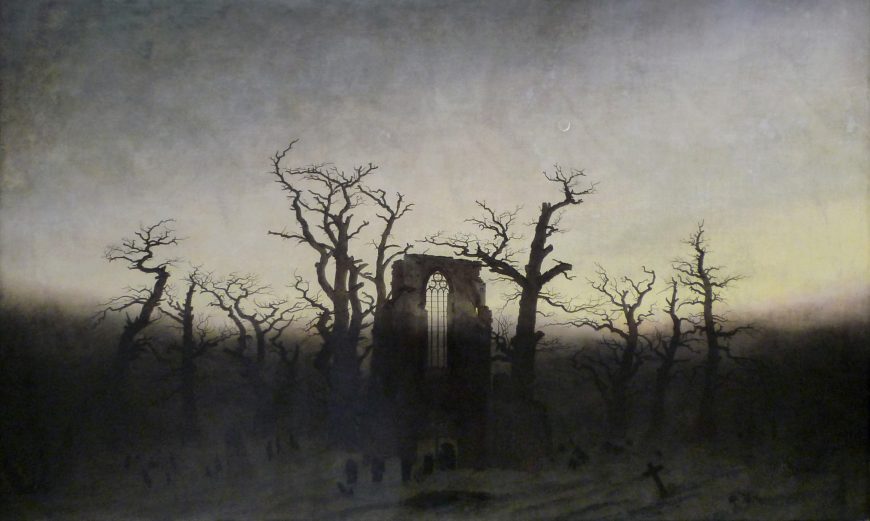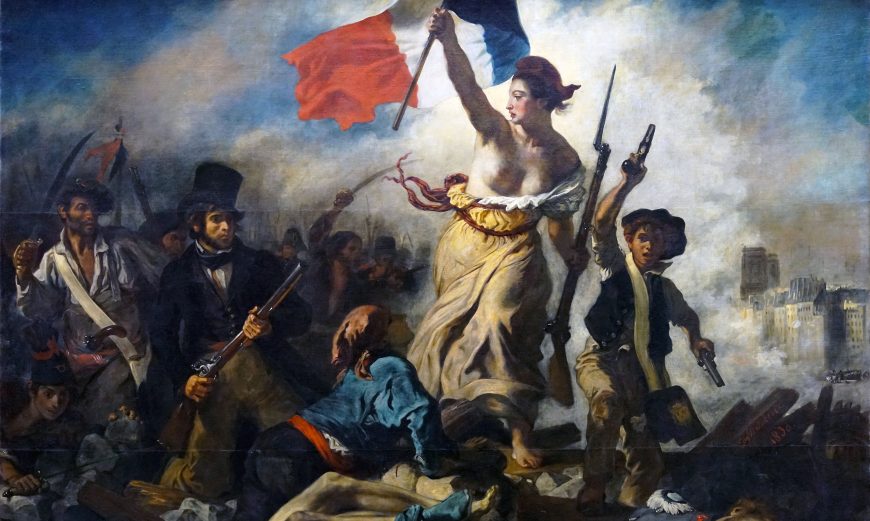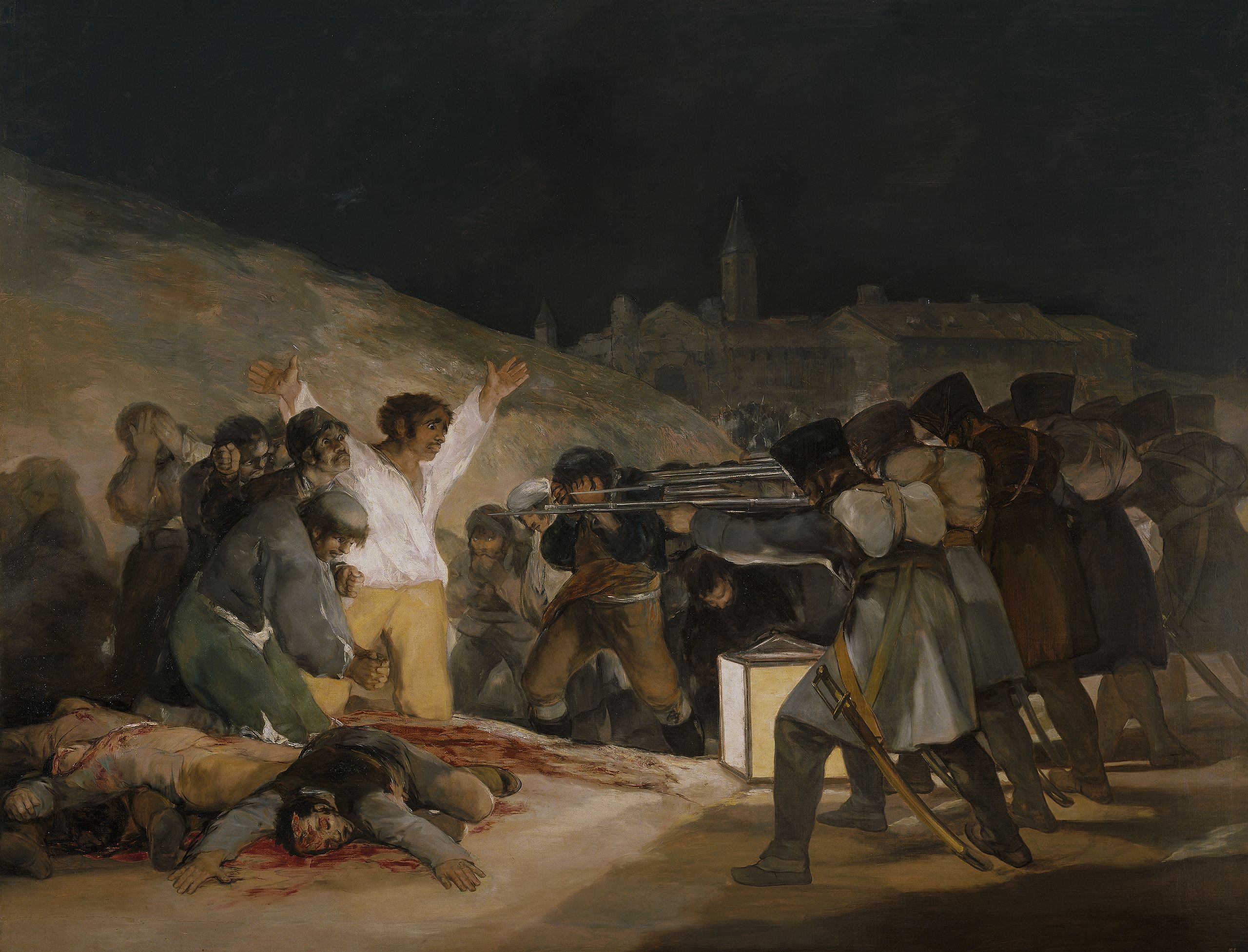
Caspar David Friedrich, Abbey in the Oak Forest, 1809 or 1810, oil on canvas, 110.4 x 171 cm (Alte Nationalgalerie, Berlin)
19th-century stylistic developments
As is fairly common with stylistic rubrics, the word “Romanticism” was not developed to describe the visual arts but was first used in relation to new literary and musical schools in the beginning of the 19th century. Art came under this heading only later. Think of the Romantic literature and musical compositions of the early 19th century: the poetry of Lord Byron, Percy Shelley, and William Wordsworth and the scores of Ludwig van Beethoven, Richard Strauss, and Frédéric Chopin—these Romantic poets and musicians associated with visual artists. A good example of this is the friendship between composer and pianist Chopin and painter Eugène Delacroix. Romantic artists were concerned with the spectrum and intensity of human emotion.

Eugène Delacroix, Liberty Leading the People (July 28, 1830), September–December 1830, oil on canvas, 260 x 325 cm (Musée du Louvre, Paris; photo: Steven Zucker, CC BY-NC-SA 2.0)
Even if you do not regularly listen to classical music, you’ve heard plenty of music by these composers. In his epic film, 2001: A Space Odyssey, the late director Stanley Kubrick used Strauss’ “Thus Spake Zarathustra” (written in 1896, Strauss based his composition on Friedrich Nietzsche’s book of the same name). Kubrick’s A Clockwork Orange similarly uses the sweeping ecstasy and drama of Beethoven’s Ninth Symphony, in this case to intensify the cinematic violence of the film.

Francisco Goya, The Third of May, 1808, 1814–15, oil on canvas, 8′ 9″ x 13′ 4″ (Museo del Prado, Madrid, photo: Botaurus)
Romantic music expressed the powerful drama of human emotion: anger and passion, but also quiet passages of pleasure and joy. So too, the French painter Eugène Delacroix and the Spanish artist Francisco Goya broke with the cool, cerebral idealism of Jacques-Louis David and Jean-Auguste-Dominique Ingres‘ neoclassicism. They sought instead to respond to the cataclysmic upheavals that characterized their era with line, color, and brushwork that was more physically direct and emotionally expressive.
Additional resources
Read a chapter in our textbook, Reframing Art History, about “Global romanticism and landscape convention”
Romanticism on The Metropolitan Museum of Art’s Heilbrunn Timeline of Art History.
Romanticism as a literary movement from Mount Holyoke College.
From NPR: The “Ode To Joy” [Beethoven’s Ninth Symphony] As A Call To Action.
Listen to Richard Strauss’ “Thus Sprach Zarathustra.”
Smarthistory images for teaching and learning:
[flickr_tags user_id=”82032880@N00″ tags=”RomanticismIntro,”]

